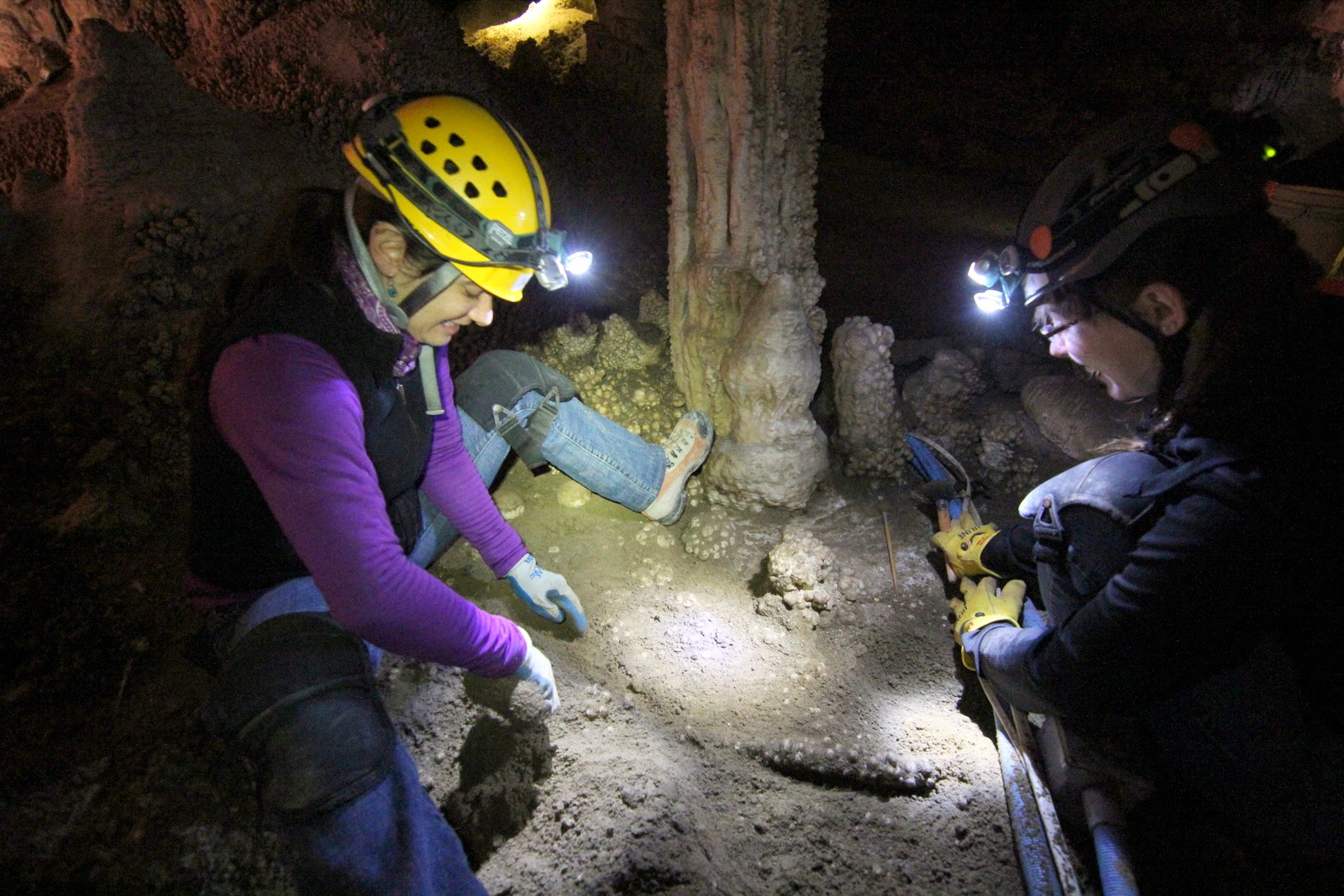What is lint?
Lint includes the tiny pieces of clothing (think dryer lint) that come off as we walk around. In a cave, air currents help them float around until they settle on cave formations, where they may change the way the speleothems form or provide an unnatural food source. Because caves are such sensitive environments, often with few changes such as sunlight and darkness, temperature swings, or flooding (at least in many caves in the arid Great Basin), they need a little help. They may need a lot of help if almost 30,000 people a year go through them, like Lehman Cave. If 30,000 people went through your house, it might need a little cleaning, too. (Mine needs a lot of cleaning with a lot fewer people than that!)
I took the kids to participate for a day. Desert Girl helped pick up pieces of litter with some tweezers. The tweezers made it a fun task.
A lot of people came for the February lint camp. We quickly became friends.
My friend Deanna came from Ely with her daughter, which made Desert Girl very happy.
But even with friends, the kids eventually tired of cleaning. They took a movie break. The cave proved to be an excellent theater.
Meanwhile, the volunteers were busy dusting stalactites and stalagmites, picking hairballs out of popcorn, and removing old trail debris to uncover natural cave floors. The back of the pickup truck started filling up.
So why would people volunteer their time to clean the cave? One reason is they get to visit parts of the cave that are usually off-limits, like the Talus Room. Here the special tour traverses the Sunken Garden, bypassing the pools of water.
We even found a pseudoscorpion, which is rare in this part of the cave.
Before long we were in the immense Talus Room. It is so different from the rest of Lehman Cave, cavernous and almost barren, with very few formations. Huge boulders litter the floor, giving testimony that this isn't one of the most stable parts of the cave.
Some beautiful formations do decorate the ends of the room and also this huge wall, called the Rainbow Wall.
On another slab, the cave has been turned into a bulletin board with signatures from 1885.
Everyone enjoyed seeing the Talus Room.
Then it was back to work. Here are some rimstone dams that I was cleaning. Dirt had obscured many of the crenulations.
Another part of lint camp involved checking all the lights for algae growth, and upon finding some, spraying it with a bleach solution. The algae is not natural to the cave environment and also provides an unnatural food source.
So who knew? Lint camp is so much more than cleaning. It's about finding peace, making new friends, discovering parts of the cave that haven't seen the light for decades, and feeling that you're making a difference.
Thanks to everyone who participated in lint camp!
If you'd like to read a couple other perspectives, check out these articles and photos in the Los Angeles Times and National Parks Magazine.


































No comments:
Post a Comment